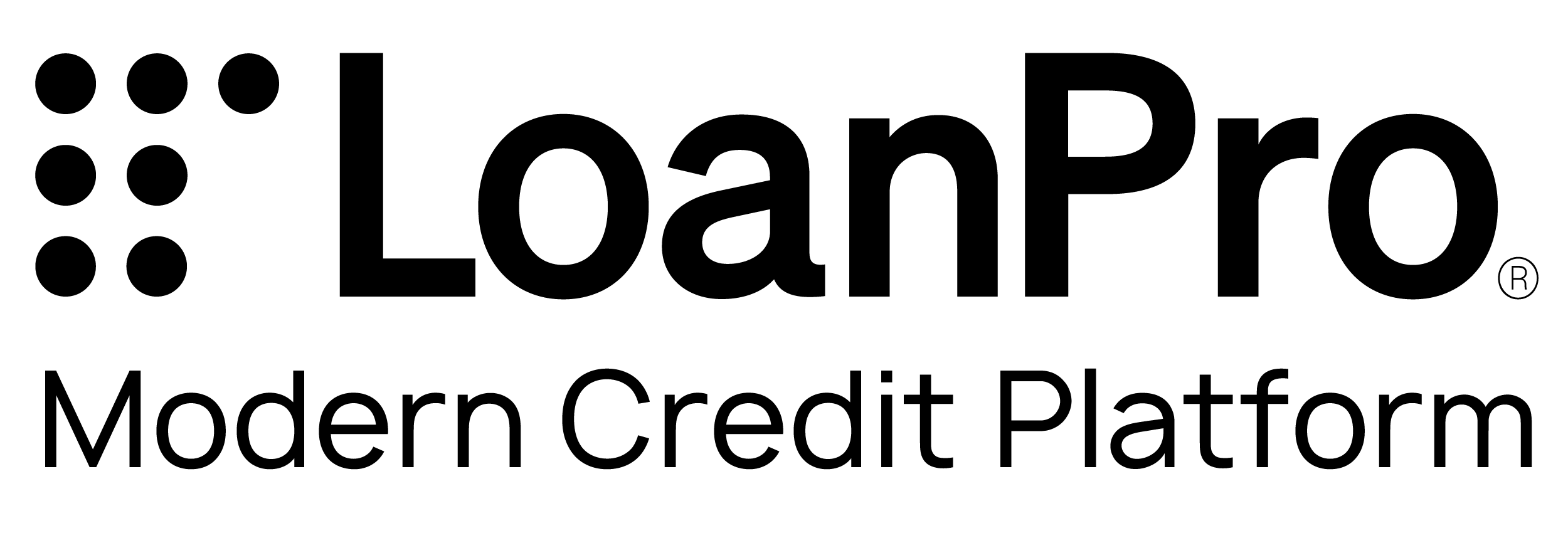Table of Contents
Introduction
Secure Payments is a LoanPro product that integrates with both LMS and third-party payment processors to facilitate payments. We developed it as a separate software so that it can more easily comply with Payment Card Information (PCI) Data Security Standards (DSS). This means that Secure Payments' code, procedures, and practices all meet a high standard for security, and that's where all of your customers' payment profile information is saved.
While security was the original reason for creating Secure Payments, it has proven helpful to have a separate software for processing payments because it is so important. Secure Payments processes hundreds of millions of dollars each month in payments.
What is Secure Payments?
Secure Payments has a few important functions:
- Securely store payment profile data
- Process payments
- Batch transactions and generate NACHA files
Payment Profile Data
For the sake of clarity, let's define two key terms:
- Payment Method - A payment method is a category of financial instrument used to make a payment. These are things like cash, credit card, or e-check (ACH).
- Payment Profile - A payment profile is a specific financial instrument. Rather than just the generic method, it's a specific card or account.
To put it another way, credit cards as a category are a payment method, but the credit card in your wallet is a payment profile.
Payment profile information is tokenized when it is entered into Secure Payments. This means the information is stored and encrypted and then a token is produced that identifies that specific payment profile. The token doesn’t contain any encrypted payment profile data, and it is worthless except as an identifier for the payment profile. Human-readable payment profile data cannot be extracted from Secure Payments once it is put in. This means that if the information was somehow accessed by an unauthorized person, they would not be able to use the information.
A lot of the time, the tokenization is done by payment processors. Because Secure Payments is not a processor, but is integrated with several processors, it gives LoanPro customers more flexibility by simply storing their payment profile information with a single processor.
Processing Payments
Secure Payments transacts a large volume of payments, and it keeps a record of every transaction and response. Because of this volume, Secure Payments' code and infrastructure have been optimized to process payments in the tiniest fraction of a second.
Secure Payments is a hub for third-party payment processors. These processors can transact bank card payments (credit and debit), eCheck/ACH payments, and Canadian EFT payments. They can also transact the sending of funds to a debit card or bank account. Each processor provides a different service and targets a different market. A lender chooses their processor based on cost and who will approve them.
When an integration is done, the sending and receiving of transactions within each processor is standardized so it looks the same in the Secure Payments user interface (UI) and application programming interface (API). This means: regardless of which or how many processors you use, Secure Payments will make it easy to use and switch back and forth.
Batch Transactions
In addition to our integrated processors, Secure Payments can also facilitate batch processing for ACH transactions in the United States and EFT transactions in Canada. Lenders can use LMS just like they would with an integrated processor, saving payment profile data and logging transactions which are then sent to Secure Payments. But instead of handing those transactions off to another company, Secure Payments batches them into a special formatted file which the lender then sends to their partner bank. From there, the bank takes over and moves money from one account to another.
Secure Payments can batch transactions into NACHA files (in the US) and CPA-005 files (in Canada). Both types of file are very strictly formatted.
This Feature Is Not
Let's take a second and clear up some possible misconceptions about Secure Payments.
- Secure Payments is not a payment processor. Instead, it facilitates payment processing, by integrating with several payment processors, keeps track of transactions, and securely stores payment data. However, Secure Payments has a limited number of integrated processors. While it is sometimes possible for Secure Payments to integrate with additional payment processors by request, it's not guaranteed that an integration will always happen.
- Secure Payments is not Connections. It is integrated only with payment processors and not any of the integrated services offered by Connections.
What's Next?
If you'd like to learn more about how to use Secure Payments, check out the Using Secure Payments article, which will go into more detail about the integrated payment processors and how to use Secure Payments.
